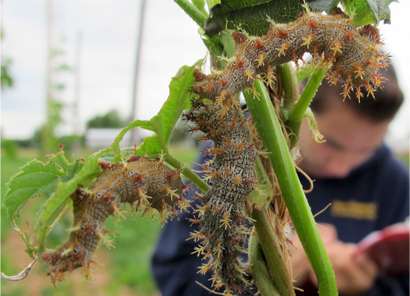New pest management resource for hop growers in the northeast

Dr. Lily Calderwood, a researcher at the University of Vermont, and a team of researchers have published an open-access article in the Journal of Integrated Pest Management that should help hop farmers in the northeastern U.S. to manage insect pests. The article provides a comprehensive assessment of hop pests and methods for managing them.
Over the past five years, hop acreage has increased in the region as many local breweries are eager to use them. However, hop pests can be a big problem for growers. Dr. Calderwood has observed as much as 80-90% yield loss in northeastern hop yards due to arthropod pests.
"With the increased interest in growing hops, arthropod pests became prevalent," said Calderwood. "Locally sourced hops are in high demand from brewers, and the current regional hop acreage cannot provide enough hops at high enough yield and quality to meet the demand. This is due in part from both arthropod and disease pest pressure."
Over the course of three growing seasons, the team observed seven farms growing commercially available hops of different varieties. They documented the pests present, the predators of pests present, the phenology of the insects, and the plant symptoms of infestation. They also provide management options for each of the pests.
The researchers were surprised by two discoveries. First, the two main pest of hops—the twospotted spider mite (Tetranychus urticae) and the hop aphid (Phorodon humuli)—might not require insecticides to be controlled. And second, insecticides might actually cause more harm than good.
"Natural enemy populations can actually manage twospotted spider mites and hop aphids," said Calderwood. "We no longer spray any insecticide in our research hop yard for these pests that are typically economically damaging in other hop-growing regions."
In two of the hop yards, the researchers found that insecticides "kill natural enemies and increase the risk of a twospotted spider mite outbreak."
More information: jipm.oxfordjournals.org/lookup … /10.1093/jipm/pmv017
Provided by Entomological Society of America



















